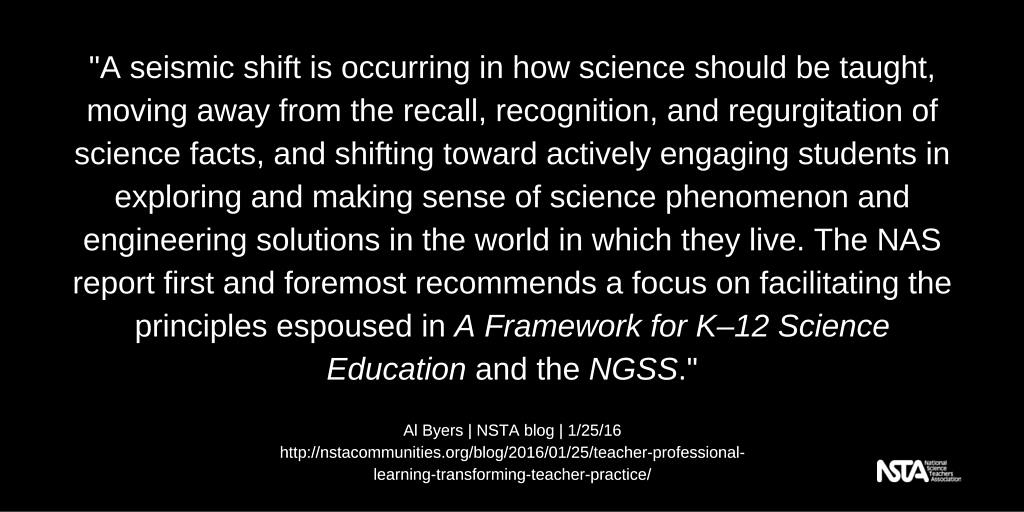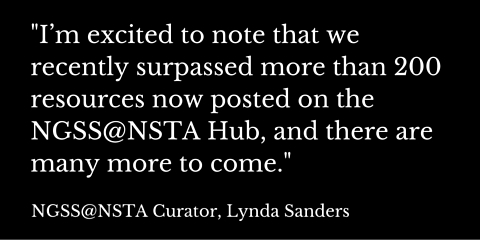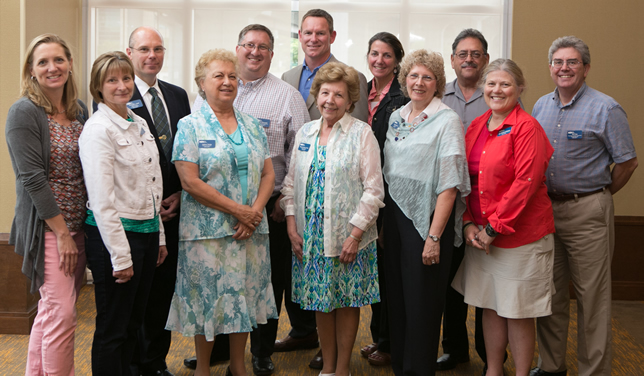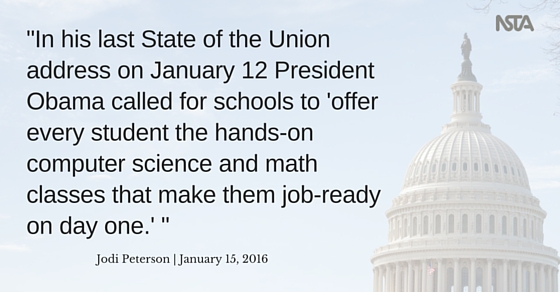Ideas and information from NSTA's January K-12 journals
By Mary Bigelow
Posted on 2016-01-26
All three journals this month include the article Addressing Three Common Myths About the Next Generation Science Standards – another must-read article that applies to all grade levels and science subjects.
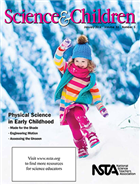 Science and Children – Physical Science in Early Childhood
Science and Children – Physical Science in Early Childhood
Our youngest students are inquisitive about the physical world – gravity, matter, weather, motion, the solar system, sound, light… Here are suggestions for building on their natural curiosity and their questions about the world around them.
- Made for the Shade has a 5E lesson in which students create shelters to protect “lizards” from harmful UV radiation.
- How We Know What We Know uses cars and ramps to challenge what evidence students can gather to support their conclusions.
- Engineering Motion includes suggestions for students to make and test car models and communicate their results.
- Assessing the Unseen combines students’ interests in music and literature
- Seeing the Solar System Through Two Perspectives connects
- Teaching Through Trade Books: You Light Up My Life has two lessons to investigate materials that are translucent, transparent, opaque, and reflective.
- The Early Years: Blowing Bubbles can be an introduction to many science concepts and practices.
- Formative Assessment Probes: Uncovering Students’ Concept of Matter helps you to find out what students do (or do not) know about this concept.
- Engineering Encounters: A House for Chase the Dog has a 5E lesson in which students study the characteristics of materials in order to protect a pet from the weather.
For more on the content that provides a context for these projects and strategies see the SciLinks websites for Colors, Forces and Motions, Light, Matter, Pinhole Images, Properties of Matter, Reflection, Reptiles, Sound, States of Matter, UV Index, Vibration.
Continue for Science Scope and The Science Teacher.
Science Scope – Ecology and Biology
- A Biomedical Engineering Twist to Science
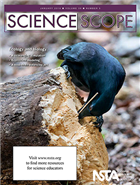 Fairs has suggestions for an engineering fair as an alternative to traditional science fairs. There are ideas for both competitive and in-class fairs with a focus on medical problems/inventions.
Fairs has suggestions for an engineering fair as an alternative to traditional science fairs. There are ideas for both competitive and in-class fairs with a focus on medical problems/inventions. - Modeling Ecosystems has a lesson for going beyond models as replicates of objects (e.g., the cell) to the use of models to explain and predict phenomena
- Outbreak! Cells, Pathogens, and Disease uses a 5E lesson to help students explore the science behind global outbreaks of diseases.
- Eco-Choices: Understanding the Complex Consequences of Local Decisions describes a simulation that could be used as an introduction or an assessment. Students explore how their decisions affect an ecosystem and design solutions to real-life problems.
- Tried and True: Bird-Brained Foraging: Learn to Eat Like a Crow has another approach to connecting living things to their food chains.
- Engaging Students With Dynamic Models: Peruvian Food Chain Jenga shows how a common game can be repurposed into a model, in this case a model of marine-based food chains.
For more on the content that provides a context for these projects and strategies see the SciLinks websites for Bacteria, Biomedical Engineer, Cell Features, Cell Growth, Disease, Ecosystems, Food Webs, Habitats and Niches, Marine Ecosystems, Microbes, Modern Epidemics, Pathogens, Watersheds.
The Career of the Month: Agricultural Engineer in The Science Teacher could also fit with this month’s theme.
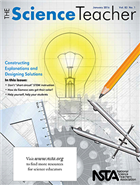 The Science Teacher – Constructing Explanations and Designing Solutions
The Science Teacher – Constructing Explanations and Designing Solutions
“Science is all about asking questions and constructing explanations, while engineering focuses on defining problems and designing solutions. I think of science as the quest for timeless truths and engineering as the search for design solutions rooted in a particular time and situation… Science and engineering work hand in hand to understand and address major challenges confronting our world…” TST Field Editor Steve Metz
- Don’t “Short Circuit” Stem Instruction has ideas for using electric circuits to learn about science and engineering practices.
- How Do Siamese Cats Get Their Color? asks students to connect genes, proteins, and traits to explain and model the phenomenon.
- Salamander Saver illustrates how students can participate in design projects with real-world applications
- Assessment as Learning explores the idea of assessment as learning, where students learn, collaborate, and self-correct during the assessment, using the separation of mixtures as a context.
- Science 2.0: Do I Need a Robot? describes connecting with students via a “telepresence.”
- The Green Room: Hurricanes and Humans provides timely information on severe storms in an El Niño year.
- Idea Bank: Secrets of the “Sunspots” address misconceptions about sunlight and eclipses, using pinhole cameras and geometry.
For more on the content that provides a context for these projects and strategies see the SciLinks websites for Chromatography, Distillation, Dominant and Recessive Traits, Eclipses, El Niño, Electric Circuits, Genetics, Hurricanes, Lakes and Ponds, Pinhole Images, Proteins, Protein/ Enzymes, Robots, Salamanders.
Check out the Teach Engineering site for more lessons that integrate science and engineering in real-life scenarios.
All three journals this month include the article Addressing Three Common Myths About the Next Generation Science Standards – another must-read article that applies to all grade levels and science subjects.
Teacher Professional Learning: Transforming Teacher Practice
By Guest Blogger
Posted on 2016-01-25
I encourage STEM educators (and administrators) across the U.S. to read and understand Science Teachers’ Learning: Enhancing Opportunities, Creating Supportive Contexts, a terrific report just released by the National Academies of Science (NAS), Engineering and Medicine.
The National Academy report illuminates practical recommendations and lays out the supportive environment and professional learning experiences teachers need and which are critical to the enactment and application of the three-dimensional teaching and learning espoused in A Framework for K–12 Science Education and the Next Generation Science Standards (NGSS).
With laser-like focus, this report hits the mark, targeting its conclusions and recommendations at the level where education change is most critical, and placing the emphasis on enhancing teacher practice through professional learning situated within the context of their schools and districts.
School leaders will greatly benefit from the 13 conclusions and 7 recommendations outlined in this report (more below). Another must read is NSTA’s statement on the NGSS which can help science teachers to secure much-needed funding for the professional learning activities called for in the NAS report.
Moving to a New Vision of Science Teaching and Learning—Content and Pedagogy are Critical
A seismic shift is occurring in how science should be taught, moving away from the recall, recognition, and regurgitation of science facts, and shifting toward actively engaging students in exploring and making sense of science phenomenon and engineering solutions in the world in which they live. The NAS report first and foremost recommends a focus on facilitating the principles espoused in A Framework for K–12 Science Education and the NGSS, which succinctly suggests: Deeper and more flexible student learning of the Disciplinary Core Ideas (DCI) of science occurs through three-dimensional teaching and learning that engages students in authentic Science and Engineering Practices as they solve and investigate real world, locally relevant/interesting problems and science phenomenon, recognizing Crosscutting Concepts such as patterns, cause and effect, systems and system models, etc., which ultimately facilitate coherence and connections across concepts, solutions, and science disciplines.
As outlined in the NAS report, here are a few of the key areas where it is critically important that teachers receive support, and suggestions on how NSTA can help:
- Teachers must understand specific science content areas they are charged to teach (especially at the elementary level)
NSTA Connection: We have 25 self-directed teacher web modules, called SciPacks, focused on the disciplinary core ideas of science. They provide subject matter support for educators in science concepts such Force and Motion, Cell Structure and Function, and the Earth’s Changing Surface. Each module also contains a pedagogical-implications component that culls the science education research and provides a context for how to facilitate teaching the science phenomenon, identifying promising pedagogical strategies, known student preconceptions, and what is cognitively appropriate to teach by grade band. A 5E inquiry model embeds quizzes, simulations, animations, and hands-on activities that let teachers engage, explore, explain, elaborate, and evaluate their understanding of the DCIs through an optional final assessment. These SciPacks are also available as enhanced e-books, accessible via our NSTA e-reader application, making them available offline via tablets on iPad and Android operating systems.
- Teachers must see examples and gain practice in modeling new instructional strategies
NSTA Connection: NSTA hosts NGSS web seminars and virtual conferences on the NGSS and STEM, focusing on the science and engineering practices and district-based case studies on integrated STEM, with archives accessible after each live event. Lead by leading experts, administrators, and practitioners in the field, these are excellent resources to scaffold professional learning discourse and learning at local school and district levels. Examples and strategies applicable for specific content and grade bands are shared, and asynchronous discourse is also available online via the NSTA Learning Center–moderated NGSS and STEM community forums. NSTA also maintains a robust presence on all major social media platforms (e.g., twitter, Facebook, etc.), including our blogs and discussion forums, accessible via our social media dashboard.
- Teachers must have access to curriculum materials that are aligned and consistent with the desired shifts in practice
NSTA Connection:
NSTA Publications have a plethora of award-winning, best-in-class books, e-books, journals, and newsletters aligned with the ideals and strategies espoused in the NGSS. The book titles enumerated below demonstrate the breadth and depth of our offerings, all available via the NSTA Store:- Discover the NGSS enhanced e-book
- Integrating Engineering and Sci
ence in Your Classroom - Student Lab Manual for Argument-Driven Inquiry in Biology: Lab Investigations for Grades 9–12, or for Life Science in Grades 6–8.
- Picture-Perfect Science Lessons: Using Children’s Books to Guide Inquiry, grades 3–6
- Uncovering Student Ideas in Science: 25 Formative Assessment Probes
- The NSTA Quick-Reference Guide to the NGSS, K–12
Administrators charged with helping educators achieve the vision of the new science standards will want to check out NSTA’s Introducing Teachers and Administrators to the NGSS: A Professional Development Facilitator’s Guide. This book provides classroom case studies of instructional approaches for students challenged by traditional science teaching, and covers curricular decisions involving course mapping, designing essential questions and performance assessments, and using the NGSS to plan units of instruction.
NSTA also has enlisted 55 expert curators who are searching for and vetting lessons, activities, simulations, models, and other type of materials that might be used for instruction and meeting the new standards. For a list of curated NGSS resources, you may review over 200 resources at our NGSS@NSTA Hub. The Hub has become a central source for science educators to locate professional learning, materials and resources to work towards the vision of the NGSS and Framework.
NSTA also formally collaborates with more than 180 districts and universities across the country, helping them implement their strategic goals and course offerings in support of the NGSS and STEM, both at the in-service and pre-service levels. Our NSTA Learning Center platform may be configured to enhance local onsite efforts with private cohorts and administrator dashboards to help document teacher growth as users create and complete long-term professional growth plans catering to their unique needs and district and school strategic plans.
Watch for my next blog where I will discuss more of the NAS report and outline additional methods teachers and administrators can consider for professional growth.
If you’d like to learn more about the partnerships or products listed above, please feel free to contact me at abyers@nsta.org or 703-312-9294, or Flavio Mendez, Senior Director of the NSTA Learning Center at fmendez@nsta.org or 703-312-9250.
 Al Byers, Ph.D., is the Associate Executive Director, Services for the National Science Teachers Association
Al Byers, Ph.D., is the Associate Executive Director, Services for the National Science Teachers Association
The mission of NSTA is to promote excellence and innovation in science teaching and learning for all.
Future NSTA Conferences
2016 National Conference
NGSS Workshops
2016 STEM Forum & Expo
2016 Area Conferences
Follow NSTA
Positive classroom environments support teaching science
By Peggy Ashbrook
Posted on 2016-01-23
 Science teaching is only a part of the work of early childhood science educators. Supporting children’s development of social-emotional skills and executive function are foremost in every activity we engage children in.
Science teaching is only a part of the work of early childhood science educators. Supporting children’s development of social-emotional skills and executive function are foremost in every activity we engage children in.
When children feel safe in the class is when they can exercise their curiosity and ask questions that lead to looking for answers and thinking about what they find out. To learn more about making all children welcome in my classroom I read several books, the notes from one book club and participate in another. Colleagues also sent links to articles that guide early childhood educators in creating positive classroom climates.
Here are some resources about supporting all children. I hope you will continue to expand my understanding by posting additional resources and links to articles.
Book discussions:
 An online blog book study group discussing What if Everybody Understood Child Development? by Rae Pica took place on Beyond the Pages, beginning on August 5, 2015, part of the Early Childhood and Youth Development blog from Dakota County Technical College, A member of the Minnesota State Colleges and Universities System. Read the book and see the archived blog posts here.
An online blog book study group discussing What if Everybody Understood Child Development? by Rae Pica took place on Beyond the Pages, beginning on August 5, 2015, part of the Early Childhood and Youth Development blog from Dakota County Technical College, A member of the Minnesota State Colleges and Universities System. Read the book and see the archived blog posts here.
 The Diversity & Equity Education for Adults NAEYC Interest Forum began a virtual book club as an informal, 13-week exploration of the question raised by the classic book, Anti-Bias Education for Young Children and Ourselves, by Louise Derman-Sparks & Julie Olsen Edwards: What can we do to raise the next generation of young people who know and are proud of who they are, are able to be in equitable relationship with others, can recognize and name unfairness in the world around them, and are ready to take action to address it?
The Diversity & Equity Education for Adults NAEYC Interest Forum began a virtual book club as an informal, 13-week exploration of the question raised by the classic book, Anti-Bias Education for Young Children and Ourselves, by Louise Derman-Sparks & Julie Olsen Edwards: What can we do to raise the next generation of young people who know and are proud of who they are, are able to be in equitable relationship with others, can recognize and name unfairness in the world around them, and are ready to take action to address it?
The discussion continues into February–read and join in the open discussion on the Facebook page. (You can read a Q & A session with the authors on the NAEYC website.)
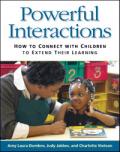 Another book I’ve found helpful:
Another book I’ve found helpful:
Powerful Interactions: How to connect with children to extend their learning by Amy Laura Dombro, Judy Jablon, & Charlotte Stetson. There is a free, archived webinar by one of the authors, Judy Jablon at the Early Childhood Investigations. The Boston -AEYC Old Colony Chapter and Bridgewater State University host a webpage discussion with insightful comments about using powerful interactions. Is there an open online book discussion group for this book?
Articles that I learned from:
 Children Together, a community based, non-profit organization committed to increasing opportunities for the inclusion of children with disabilities and their families in quality early childhood programs in the city of Alexandria, Virginia, shares a page of links and resources.
Children Together, a community based, non-profit organization committed to increasing opportunities for the inclusion of children with disabilities and their families in quality early childhood programs in the city of Alexandria, Virginia, shares a page of links and resources.
The National Association for the Education of Young Children has a robust list of resources about children’s play; the importance and value for learning. (See Walter Drew’s insights about how play strengthens the essential developing capacities of young children on the Beyond the Pages blog.)
The January 6, 2016 nprEd post by Megan Anderson, “How To Help Kids In Poverty Adjust To The Stability Of School After Break,” helps us consider children’s economic situation, quoting teacher Sonya Romero Smith: “If school is the place where you’re supposed to get knowledge and realize what the world has to offer,” she says, “it should be the safest place, where you have the ability to show your greatness.”
Washington Post article on July 28, 2015, “Are you holding your own daughter back? Here are 5 ways to raise girls to be leaders,” by Amy Joyce. (See Diane Levin’s insights about “How & Why Media & Marketers Promote “Pretty Faces” to Young Girls and What We Can Do about It” on the Beyond the Pages blog.)
Powerful Interactions Begin with You by Amy Dombro, Judy Jablon, and Charlotte Stetson. TYC 4(1): 12-14. This article is a helpful introduction to the book, Powerful Interactions.
This short list is just a few of the resources that are useful to early childhood educators for learning about how to support all children. Post your additional resources and links to articles!
More Than 200 Vetted Classroom Resources on the NGSS@NSTA Hub
By Guest Blogger
Posted on 2016-01-22
With the creation of the Next Generation Science Standards (NGSS) came the question of “What does NGSS-based instruction look like in my classroom, and where will I find the instructional resources for teaching the new standards?” So NSTA put out a call and pulled together a group of 55 educators, myself included, called NGSS@NSTA Curators. The job of the Curators is to search for and vet lessons, activities, simulations, models, and other type of materials that might be used for instruction and meeting these new standards. I’m excited to note that we recently surpassed more than 200 resources now posted on the NGSS@NSTA Hub, and there are many more to come.
We began our work shortly after the standards were finalized in 2013 and have spent many hours searching and evaluating materials related to the different standards. At the NGSS@NSTA Hub, you can simply click on a standard and get a list of resources related to that standard. You can also see a full list of the resources by science subject. For each resource, we explain how it meets the performance expectations, practices, disciplinary core ideas, and crosscutting concepts. If there are areas that are weak, we give tips and suggestions for strengthening the three-dimensional relationships. We also provide additional information on how well the overall resource meets the three-dimensional aspect of the performance expectation, the instructional nature of the resource, how well it provides a way to monitor student learning, and if it involves technology, how well the interaction is.
While no resource is perfect, these resources give educators a starting point for lessons, so they can begin to see how the new standards can be taught in the classroom. As more people use the standards in their teaching, more NGSS-aligned resources will begin to appear and be added to our growing collection. My fellow Curators and I hope these resources provide the assistance and insight needed to begin teaching the new standards in classes now. Go take a look today!
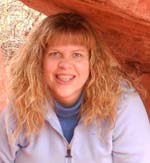 Lynda Sanders is an NGSS@NSTA curator and leads the Earth and Space Systems team. She has taught eighth-grade science for 27 years and currently teaches eighth-grade and Earth/space science at Marshfield High School in Coos Bay, Oregon. She served as President of the Oregon Science Teachers Association (OSTA) in 2009–2010 and again in 2011–2012.
Lynda Sanders is an NGSS@NSTA curator and leads the Earth and Space Systems team. She has taught eighth-grade science for 27 years and currently teaches eighth-grade and Earth/space science at Marshfield High School in Coos Bay, Oregon. She served as President of the Oregon Science Teachers Association (OSTA) in 2009–2010 and again in 2011–2012.
Follow NSTA
STEM's Good Samaritans
By Debra Shapiro
Posted on 2016-01-21

Physics and engineering undergraduates and graduate physical therapy students participating in the GoBabyGo program at Rockhurst University in Kansas City, Missouri, modify electric–powered toy cars for children with disabilities. (photo by Jen Wewers)
To help children with disabilities become more mobile, educators and students participating in a worldwide outreach program called GoBabyGo use their science, technology, engineering, and math (STEM) skills to modify electric–powered toy cars the children can operate. “GoBabyGo projects combine science, math, social studies, and embodied learning [an educational approach in which learning occurs both intellectually and through whole-body interactions],” says GoBabyGo’s creator Cole Galloway, professor of the Department of Physical Therapy at the University of Delaware in Newark, Delaware. Building the cars involves “brains, bodies, physics, and materials…math and science and doing good,” he observes.
“The dominant way we learn is through physical interactions with the world. The kids who [need the cars] have little to no mobility, so their interactions [are limited]. With the cars, their brains and bodies change; they can get smarter and stronger and more social,” he maintains. In addition, the cars cost less than most pediatric wheelchairs, and only readily available materials are required for the modifications. About 4,000 cars have been refurbished during the past two to three years, he reports.
While modifying the cars, students “learn patience and teamwork…They know they have to get this right for a person in the community, so the child will be able to use the car safely and comfortably,” he points out. The project also involves “creative engineering. It’s a great starter engineering, science, and math lab,” he contends, “and a way schools can address community problems.”
GoBabyGo is funded by the National Science Foundation and the National Institutes of Health. Galloway and the GoBabyGo staff hold training workshops for building the cars; they provide an instruction manual and resources for starting GoBabyGo programs at www.udel.edu/gobabygo. “We can advise [schools] on how [participating schools] have done it safely,” he notes.
Skye Donovan, department chair and associate professor of physical therapy at Marymount University in Arlington, Virginia, attended a GoBabyGo workshop and obtained a $2,000 grant from Marymount to launch a GoBabyGo initiative there. “I’m passionate about solving community problems [as a way] to learn science,” she declares.
“It’s fantastic to get [physical therapy graduate students] involved in service learning, and [the project gives them] more buy-in to the assessment of patients. They’re making something with their hands, so they [pay] more attention to detail. And they look at patients in a different way,” she contends.
Donovan taught sixth-grade science teacher Luzdary Chamorro of Gunston Middle School in Arlington, Virginia, and sixth graders in an after-school science club to adapt the cars. Students learned how to wire electrical circuits, measure and cut PVC pipe, and use power tools, along with “basic safety principles,” she explains. “They can see how [science is] applied, instead of just learning for learning’s sake. They develop passion for something with real-life relevancy.”
GoBabyGo was “perfect with the STEM focus we have this year,” says Chamorro. “We did engineering, technology, science, and reaching out to the community,” she relates. “We’re donating cars to kids at the [Walter] Reed School” in Arlington, which offers special education programs for students ages 2–5 with disabilities.
Chamorro has taken the project to a deeper level. “We’re working on how to design the big red button [an accelerator that replaces a small button on the car’s steering wheel that is difficult for many special-needs children to use] using a 3D printer.” Eighth-grade math teacher Charles Fix, a retired electrical engineer, had the students disassemble the button, which costs $70, to learn about it, Chamorro notes. To save money, “now we’ll design the plastic components of the button and print them with the 3D printer,” she explains.
In Ajax, Ontario, last year, science teacher Anna Farquhar and 14 eighth graders in an after-school club at Roméo Dallaire Public School built a car for a local elementary student. “We weren’t deterred when we were requested by our board of education to contact different levels of government to ensure that all safety standards were in place before releasing the car [to the child]. We learned not to give up,” she maintains. “We also had an engineer test the car to make sure it was structurally sound.”
Farquhar obtained funding from the Pollination Project of Berkeley, California, which provides $1,000 startup grants to social change projects. She and her students used half of the funds to build the car. “The students volunteered; they were self-directed and very eager,” she recalls.
“We looked at the structure of the car [and how to change it] to fit the child’s [needs],” she relates. “We had to determine how much weight the car could hold…We had to find an easy-to-use seat belt; we tested materials to ensure the seat belt wouldn’t fray. We used a very large dog collar as a seat belt.”
Farquhar’s students “earned community service hours for their diploma,” she notes. Now teaching at Michaëlle Jean Public School in Ajax, Farquhar says students there will build two cars using her remaining grant funds.
Interdisciplinary Teams

A child operates a car retrofitted by students from Central Connecticut State University in New Britain, Connecticut.
At Central Connecticut State University (CCSU) in New Britain, Connecticut, some of Michele Dischino’s technology and engineering education students build GoBabyGo cars. Dischino, associate professor of technology and engineering education and faculty advisor for CCSU’s Collaboration for Assistive Resources, Equipment, and Services (CCSU CARES) student club, launched GoBabyGo there. One of her students, CCSU CARES Lead Student Advisor Megan Hislop, obtained $5,000 from CCSU’s Student Government Association to fund the first GoBabyGo workshop, says Dischino.
Since then, students in other disciplines, such as engineering and social work, have participated. “Other students bring other skills, including ‘people skills’ for working with speci
al-needs children,” Dischino observes.
Middle and high school teachers contact her to get their students involved, and some of their schools have provided funding. “Bringing in middle schools and high schools has made it more valuable, given that my students are going to be teachers…It makes the experience even better because we can show [younger] students how they can use their [STEM] skills.”
At Rockhurst University (RU) in Kansas City, Missouri, GoBabyGo “is student-led and student-run. We have graduate physical therapy students and physics and engineering undergraduates bringing their unique perspectives in science,” says Kendra Gagnon, associate professor of physical therapy education at RU. “And now the physical therapy students are starting to understand wiring and mechanics, and the engineering students are learning about posture and movement, all while solving real-world problems.”
“Interdisciplinary team building is becoming part of our health care system,” observes Karen Patterson, faculty associate for University of Wisconsin (UW)-Madison’s Doctor of Physical Therapy Program, which works with UW-Health’s outpatient pediatric rehabilitation program on GoBabyGo. Physical and occupational therapy graduate students team with biomedical engineering undergraduates to build the cars. “We have a rough manual, but [students] have to figure it out for themselves according to the needs of each child,” she explains.
For example, one child was on a ventilator, and the students “had to build a platform for [it]…The students came up with it, all on their own,” she reports.
This article originally appeared in the January 2016 issue of NSTA Reports, the member newspaper of the National Science Teachers Association. Each month, NSTA members receive NSTA Reports featuring news on science education, the association, and more. Not a member? Learn how NSTA can help you become the best science teacher you can be.
The mission of NSTA is to promote excellence and innovation in science teaching and learning for all.
Follow NSTA
Did You Vote for NSTA's New Leaders? Here's Why You Should
By Lauren Jonas, NSTA Assistant Executive Director
Posted on 2016-01-19
The 2016 presidential election has drawn a lot of attention in the press but there is another important election that is also occurring in 2016 – the NSTA Elections. Candidates have been selected from a rigorous nomination process for the next NSTA President-Elect, Division Directors, and District Directors. Just as it is important for U.S. citizens to exercise their opportunity to vote in the federal, state, and city elections, it is also important for NSTA members to exercise their opportunity to vote for their leaders. I challenge all of the 55,000 members of NSTA to vote.
So why is your vote important? The new president-elect will become the face of NSTA when president as well as the leader of the NSTA’s Board and Council. New division directors will determine NSTA policy and the direction NSTA pursues in promoting science education. The new district directors will join other district directors in connecting state chapters and associated groups with NSTA and promoting the work of NSTA.
You can read the biographies and position statements for each of the candidates at www.nsta.org/nominations. When you login to the NSTA webpage you can go to “My Account” to cast your vote.
So what are you waiting for? I challenge all of the 55,000 members of NSTA to vote. The deadline is February 15, 2016 at 11:59pm eastern time. Exercise your right to vote and determine the next leaders of NSTA. These educators will represent you as NSTA moves forward to promote excellence and innovation in science teaching and learning for all.
So I challenge all of the 55,000 members of NSTA to vote. Since I have voted we only need 54,999 to go!
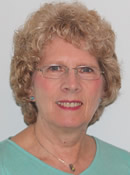 Carolyn Hayes is the NSTA President, 2015-2016; follow her on Twitter at caahayes.
Carolyn Hayes is the NSTA President, 2015-2016; follow her on Twitter at caahayes.
The mission of NSTA is to promote excellence and innovation in science teaching and learning for all.
Follow NSTA
“Knowledge” — how to use the term to illustrate the “doing” of science
By Robert Yager
Posted on 2016-01-19
“Knowledge” has several meanings for its use with student learning! A definition of “Knowledge” is traditionally considered information to help reform science education. It refers to information that can be used to indicate what others have learned.
A search of five dictionaries has yielded several examples of the meaning for the term “Knowledge.” Some include recognizing facts and truths from study or investigations. Another indicated “familiarity” one has with a subject, for example, language or branch for learning. Another dictionary indicates it is the perception of fact or truth. Another states it is practical understandings of an art or a skill. Still another states it is the sum of what is known, including facts accumulated by mankind over the course of time. Yet, these definitions do not include specific reform efforts resulting in teaching science in K-12 classrooms.
Knowledge is also referred to as cognitive or intellective mental components acquired and retained by study and experience. But, none of these definitions reveal the changes needed in teaching that are central to 2016 discussions including those recently offered by the New York Times (November 22, 2015). There it was asserted the biggest problem in education is having 50 states, 50 standards, and 50 ideas for testing related to learning. How do we really know what students are learning? How well have they learned? What do students really “know” about the information comprising the meaning of science content or from the explorations of nature encountered in their lives? Assessing students’ knowledge requires students to communicate what they have learned to provide evidence of their understanding. This occurs when students construct explanations for observed phenomena, judge the merits of a science based argument, or use mathematics and computational thinking to describe and represent relationships and use these relationships to make predictions based upon evidence.
Science learning for some students is difficult to achieve. Most educators derive great satisfaction in thinking they are helping students learn the what and that of science. However, this approach neglects the real challenges. Perhaps the focus should instead be on the how and why of science. Few recognize the measurements for learning if students are only asked to repeat and recite what is included in science classes and textbooks. Standardized tests may not measure learning in ways needed to change teaching. Some educators insist learning can be demonstrated by test scores which merely identify information students must remember and recite!
Science needs to be a “real” and “personal” learning experience. If we want students to learn and be successful, we must not treat all students alike; we should not just present information from lectures and textbooks nor just ask students to recite information from memory. We should not have students simply compete to be “number one.” Changes need to be made if we expect teaching to be successful. As science educators, we need to teach students to think like scientists, not memorize facts.
There are few who recognize the needed changes that result in correcting wrong explanations 50 years later. Few even consider most textbooks are out-of-date. One research study conducted by the University of Iowa Chemistry Department head identified over 100 content errors found in textbooks being used.
Perhaps we need to avoid encouraging students to “know” definitions and terms included in the curriculum provided for students from states and districts which often assess without attention to how student knowledge is connected and organized around core science concepts. We need to identify “knowledge” and how it can be used to indicate successful learning as well as illustrating the power of questioning, use of questions, evidence for changes, and the need for continued questioning.
Learning remains central to science and other courses in K-16 education. It is not something needed to help some students become “number one” in reciting what they read or what teachers say. It is not merely recalling information found in textbooks and teacher directives. As Nobel Laureate, Herbert Simon stated, “the meaning of “knowing” has shifted from being able to remember and repeat information to being able to find and apply it. Students need more active learning that provide indications of useful knowledge appropriate for learners of ALL ages. Students need to construct their own explanations and designs for solutions of problems which they have identified themselves.
There is little concern for accomplishing changes needed that indicate what humans really “know.” What information is central to what is taught about concepts to be learned? Knowledge is often used as a “term” to illustrate what students are expected to learn. But, what is accomplished as a result of using the term? What is it? How is “knowledge” used to get all students to “do” science and for using it in their lives? Science must be seen as a way of learning and knowing and not a body of largely unrelated facts.
Co-authors
Robert E. Yager
Professor of Science Education
University of Iowa
Kenneth L. Huff
Science and Math Teacher
Williamsville Central School District
“Knowledge” has several meanings for its use with student learning! A definition of “Knowledge” is traditionally considered information to help reform science education. It refers to information that can be used to indicate what others have learned.
My students don't study!
By Mary Bigelow
Posted on 2016-01-17
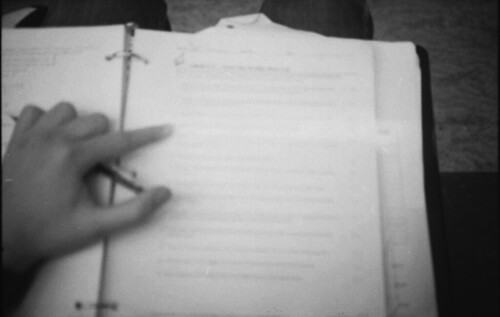 I struggle with getting my biology students to prepare for assessments. What are your thoughts? — J., Arizona
I struggle with getting my biology students to prepare for assessments. What are your thoughts? — J., Arizona
This is not an uncommon problem and J. was able to provide some additional details:
“I give them study ‘helps’ that outline the concepts to be tested and extra points if they complete them. I do flashcards each day with the vocabulary. I give them a daily study tidbit—it might be rereading a section or highlighting and annotating their notes. I also use games such as Jeopardy and online tools such as Quizlet and Kahoot. I have even developed an online site where I can electronically host study sessions with students prior to a test. But they still seem unprepared.”
It sounds like you do a lot of work for the students: creating study guides, hosting review sessions, and designing vocabulary games. Perhaps students become dependent on teachers for these materials and don’t realize what they could or should do on their own. (I even had students who were absent on the day we reviewed ask whether they had to take the test!) I suspect many students, even in high school, are not sure how to study or review. So you make a key point when you asked about ways for students to help themselves prepare for assessments.
Review games can be helpful, assuming students understand their purpose and relate their performance in the game to their learning. These games may be fine for vocabulary and factual knowledge, but I wonder about their value in preparing for higher-order assessments.
Rather than, or in addition to, a review at the end of the unit, try spacing formative assessments throughout so that students can monitor what they are learning. Several teachers on the NSTA e-mail lists and forums have described their use of practice quizzes as a preview of the types of tasks on an assessment:
- —I give students a single page review sheet. Students answer what they can and then collaborate on responses to the remaining questions, while I circulate around the room to observe the students at work. We then regroup and review. Students who volunteer the correct response get extra credit for that question. Students have a record of the questions they struggled with and can review again before the test. The extra credit has a motivational impact on student effort.
- —I use Quia to create practice quizzes. After every test I share the average scores for students who did and did not complete the practice quizzes. There is usually a 10% difference (not surprisingly). It shows students something concrete they can do to improve. To them studying is sitting down and reading the notes; practice quizzes force them into a more focused review.
- —I recently [began] giving five extra points on their test only if they had done a quiz that I put online three separate times. I wanted them to study at least three days on their own. They had to complete the quiz each time and could not have done all three in one day. My objective was to get them to not study just the one night before and to get them to develop a more patterned form of studying.
What worked for my high school and middle school students was having them create an index card study guide. Students wrote whatever they thought was important on a 4×6 card. The students soon realized that they had to actually review their notes to create the card. Very few of my test items required students to recall information, and by having some information available to them during the test, the students’ responses to open-ended questions were much improved. They were not allowed to share their cards during the assessment, and I collected the cards with the test papers so that students could not give them to others.
I discovered that looking at the cards gave me some feedback on what the students considered important. The students attached the cards to their notebooks for future reference and review.
When creating these cards, students actually engaged in some higher-level thinking—determining what they knew, what they don’t know, and what they thought was important, as well as prioritizing information to fit on the card. Yes, there were students who did not take advantage of the opportunity. But I had a student who said, “You sly dog! I spent more time creating the card than I would just studying by paging through my notes—and I did well on the test!”
 I struggle with getting my biology students to prepare for assessments. What are your thoughts? — J., Arizona
I struggle with getting my biology students to prepare for assessments. What are your thoughts? — J., Arizona
This is not an uncommon problem and J. was able to provide some additional details:
President Obama Gives Shout Out to Computer Science and STEM in SOTU
By Jodi Peterson
Posted on 2016-01-15
In his last State of the Union address on January 12 President Obama called for schools to “offer every student the hands-on computer science and math classes that make them job-ready on day one.”
The President also mentioned the newly defunct No Child Left Behind, calling the new education bill (Every Student Succeeds Act) an important start, and pointed out his achievements to increase childhood education, lift high school graduation rates, and “boost graduates in fields like engineering.”
Following the State of the Union address, Acting U.S. Secretary John King kicked off his “Opportunity Across America” tour to discuss the Every Student Succeeds Act (ESSA).
According to the White House Office of Science and Technology, “Our economy is rapidly shifting, and educators are increasingly recognizing computer science as the new basic. There are over 600,000 high-paying technology jobs open across the U.S., and by 2018, 51 percent of all STEM jobs are projected to be in computer science-related fields. However, computer science (CS), is taught in less than 25 percent of American K-12 schools, even as other advanced economies, such as Britain, are making it available for all students aged 5-16. In addition, students of color, girls, and students in high-need schools are less likely to take computer science than other students, and few middle school or elementary schools offer any computer science experiences.”
Additional White House outreach to expand computer science education is expected soon.
In related news, the Computer Science Teachers Association, the Association for Computing Machinery, and Code.org are joining forces to create a K-12 Computer Science framework for educators and policy makers. Working with advisors within the computing community, and with several states and large school districts, technology companies, and other organizations, the groups will create a framework that will identify key K-12 computer science concepts and practices students should know at the end of grades 2, 5, 8, and 12.
Update on Every Student Succeeds Act
The Department of Education is busy drafting regulations for the ESSA, and advocates called on ED officials to ensure the new law is properly enforced during two public hearings this past week.
In December, ED issued a Dear Colleague Letter to states to clarify some questions (largely about Title I) about transitioning to the new law. The rule-making process is now underway, and teachers and teacher leaders can provide recommendations about the implementation of the new law until January 21. Draft regulations are expected out this spring. ESSA provisions will take effect at the start of the 2017-18 school year. Waivers to NCLB will end on August 1, 2016.
Supreme Court Hears Arguments on Union “Fair Share” Fees
Last week the Supreme Court heard oral arguments in the Friedrichs v. California Teachers Association case that could bar public-sector unions from collecting “fair-share” fees from non-members, a move that Politico says “could reduce union membership drastically and drain union coffers.”
Read more about the Supreme Court hearing last week, this EdSource background story on the case, and the NEA response.
Jodi Peterson is Assistant Executive Director of Legislative Affairs for the National Science Teachers Association (NSTA) and Chair of the STEM Education Coalition. e-mail Peterson at jpeterson@nsta.org; follow her on Twitter at @stemedadvocate.
The mission of NSTA is to promote excellence and innovation in science teaching and learning for all.
Follow NSTA



